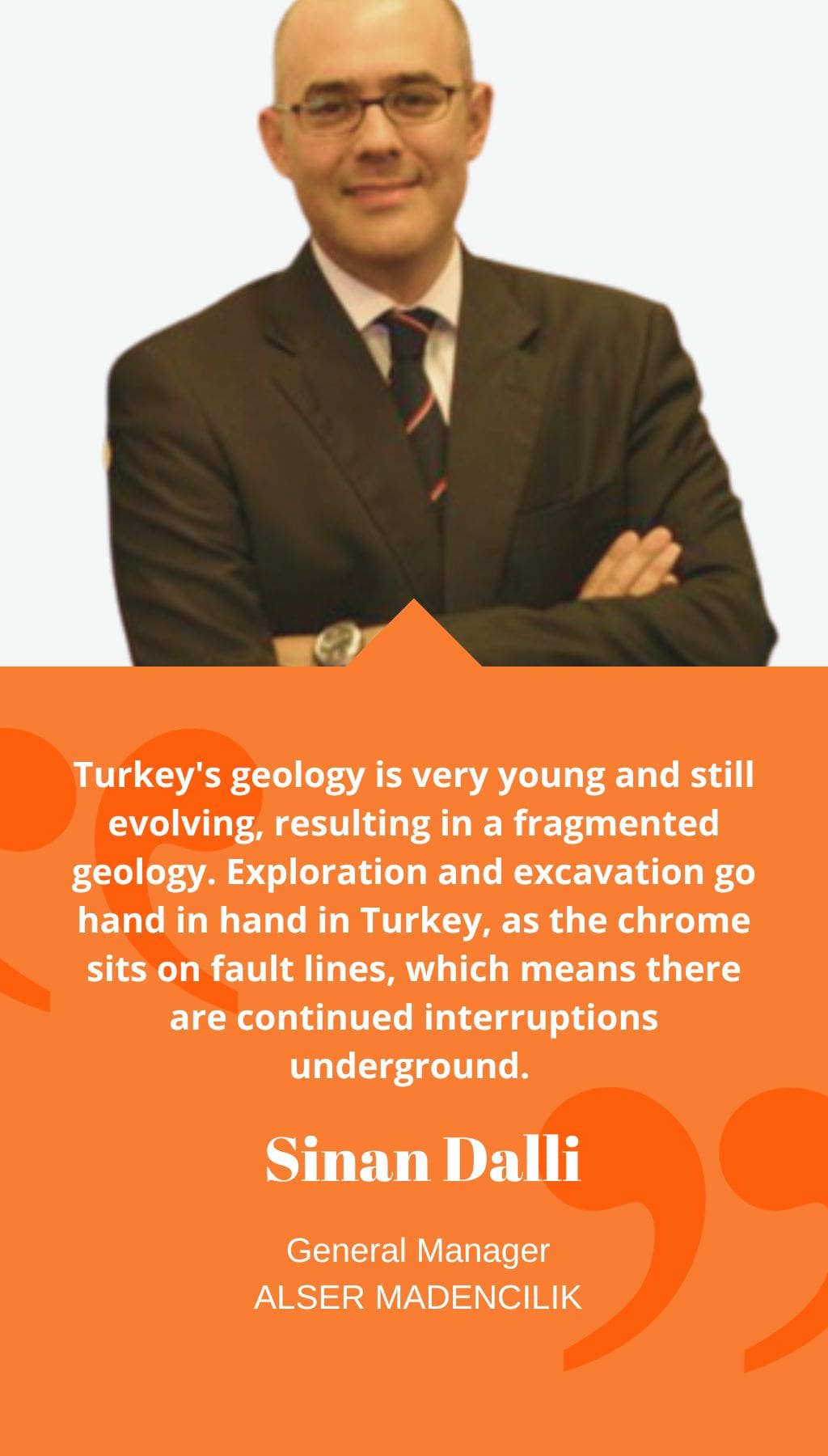
- Turkey | 30 March 2018

What are some milestones for Delta Group since acquiring Alser in 2013?
Delta Group entered the mining industry in 2013 and initially focused on chrome. They spent their initial capital on exploration drilling and have discovered the largest lumpy chrome ore deposit in Turkey in the last 20 years. They have only drilled 20% of the prospecting area, indicating huge potential. Alser has a couple of galleries where they immediately started production and generated cash flow.
How does Alser fit into the chrome value chain?
Alser is an independent player that produces for trading purposes. They have a diversified base of clients in locations like China, the Middle East, the UK, Germany, and Sweden. Alser’s products are of premium quality. They acquire lower grade material from other mines in the region and have a blending operation to achieve a better volume/price equilibrium. Alser is now the largest trading company in western Turkey. They currently produce about 6,000 mt/y to 8,000 mt/y of lumpy chrome ore ranging from 42% to 50% grade from their own mine, and 15,000 mt/y of trade material from third-party providers.
What makes Turkey’s geology special in terms of chrome production?
Turkey’s geology is very young and still evolving, resulting in a fragmented geology. Exploration and excavation go hand in hand in Turkey, as the chrome sits on fault lines, which means there are continued interruptions underground. Drilling requirements are ongoing throughout the project life while the ore deposits are close to the surface and the grades are higher due to it being a volcanic zone.
What is Alser’s timeline for investments to increase production and reserves?
Alser had the goal of 100,000 mt/y of chrome sales within three years when they started, which they have achieved. They plan to have 150,000 mt/y of production from their own mine next year. They will spend most of their capex in exploration and acquiring new licenses. Alser is pursuing a ‘hub mining’ strategy where they leverage their existing people and equipment and acquire licenses which have synergies to reduce their cost of production. They plan to invest $50 million to $100 million in new licenses over the next three years, with capex spending for infrastructure and equipment being $15 million to $20 million. Additionally, they need to do 100,000 meters of drilling over the next four years, costing about US$10 million.
Why has there not been more chrome production in western Turkey already and what is your outlook for mining in Turkey generally?
Historically, most of the drilling activity in Turkey has been done to discover coal rather than metallic deposits. Chrome deposits have mostly been found sporadically. Most deposits have been exploited using surface mining, which is extremely risky because once the surface level is excavated, all the data about a potentially much larger deposit is lost. Therefore, there needs to be a joint effort by the government and private industry to do longer and deeper drilling with long-term planning.














